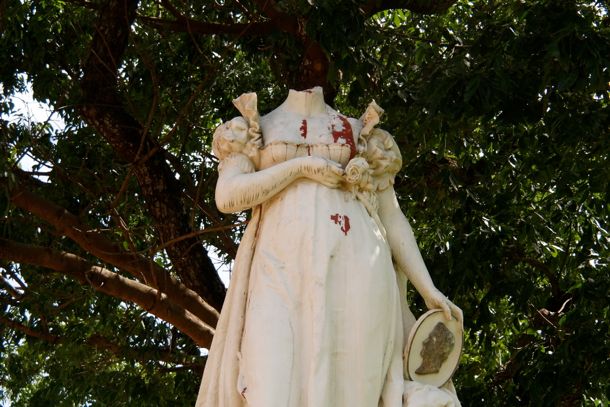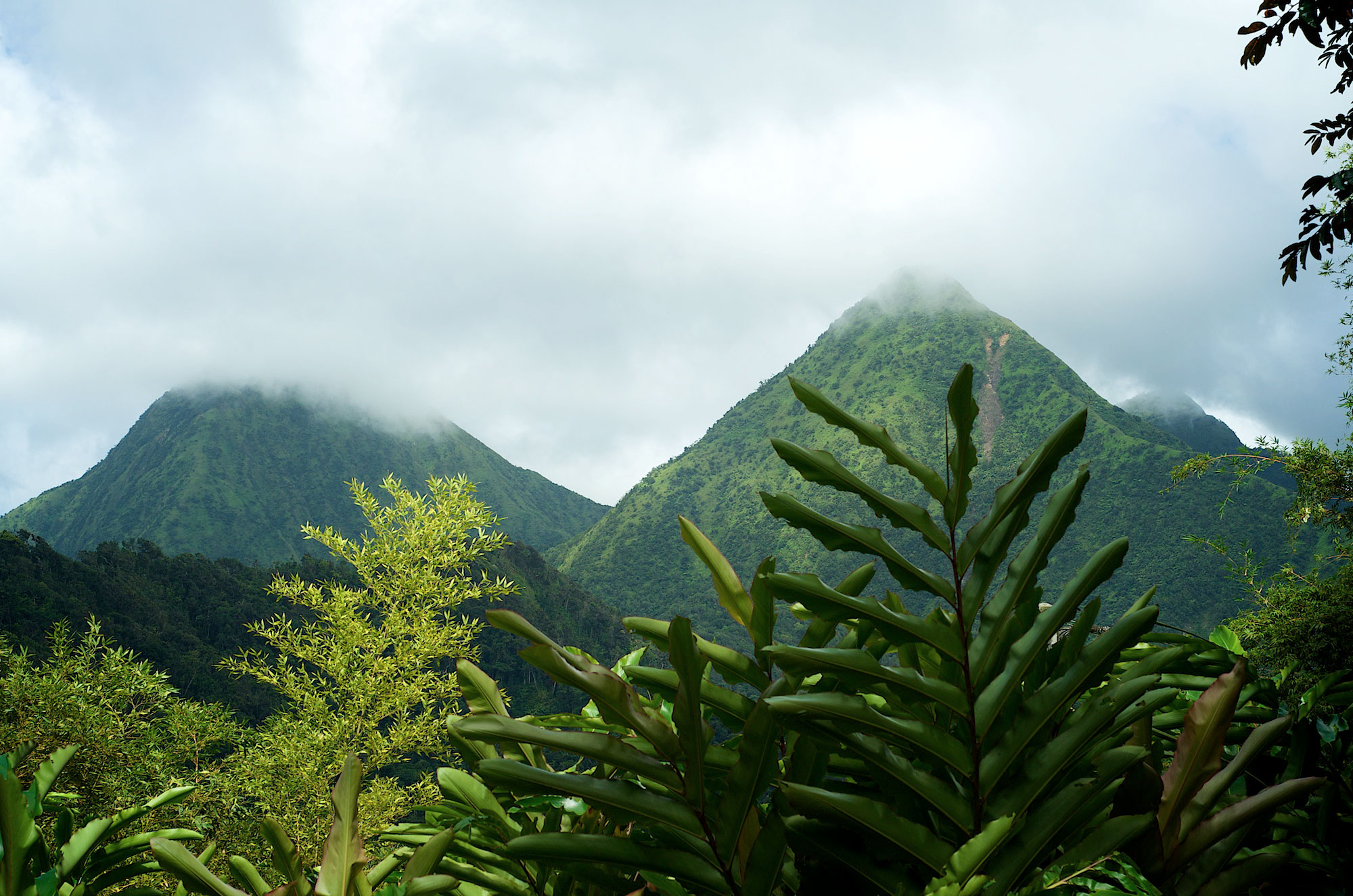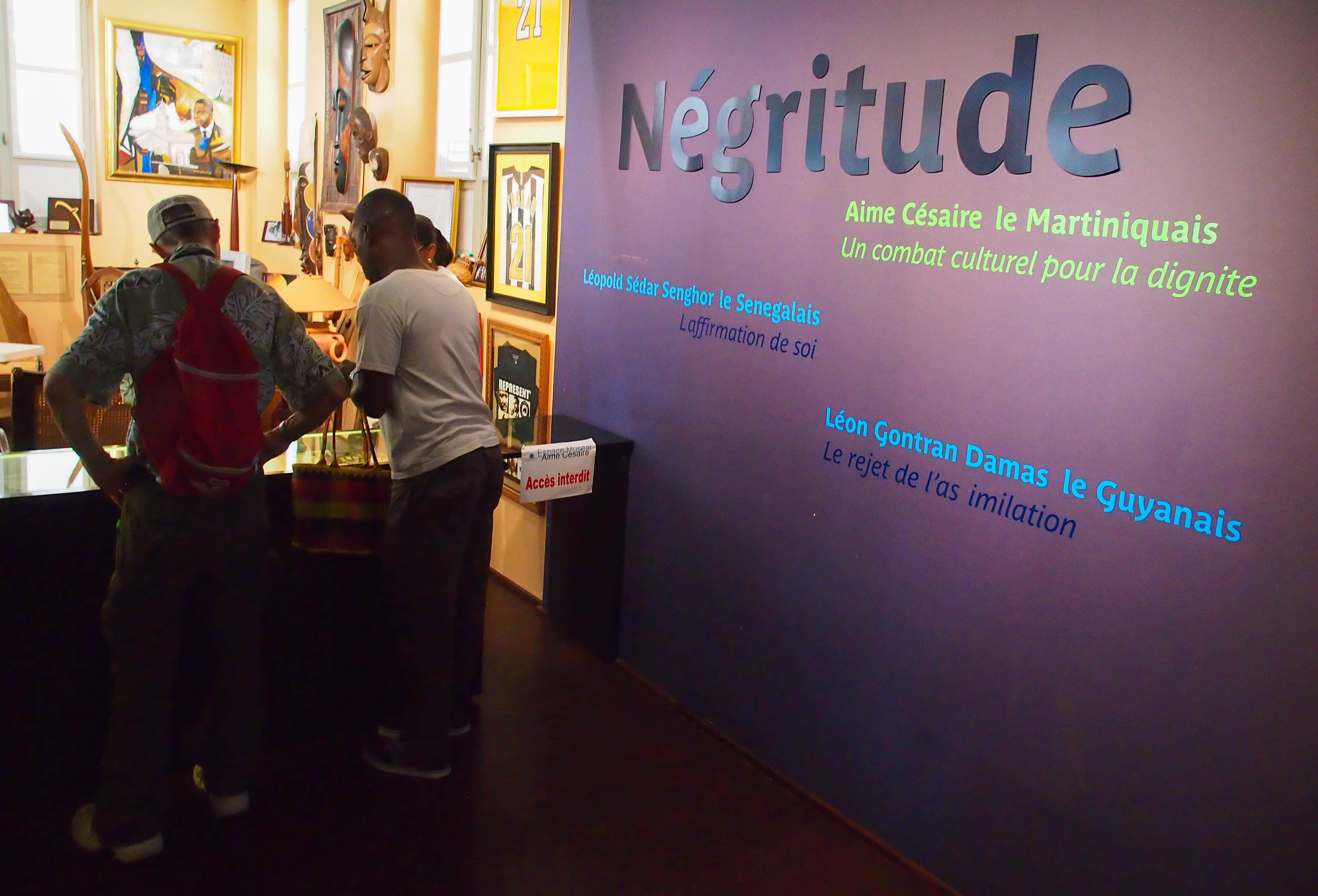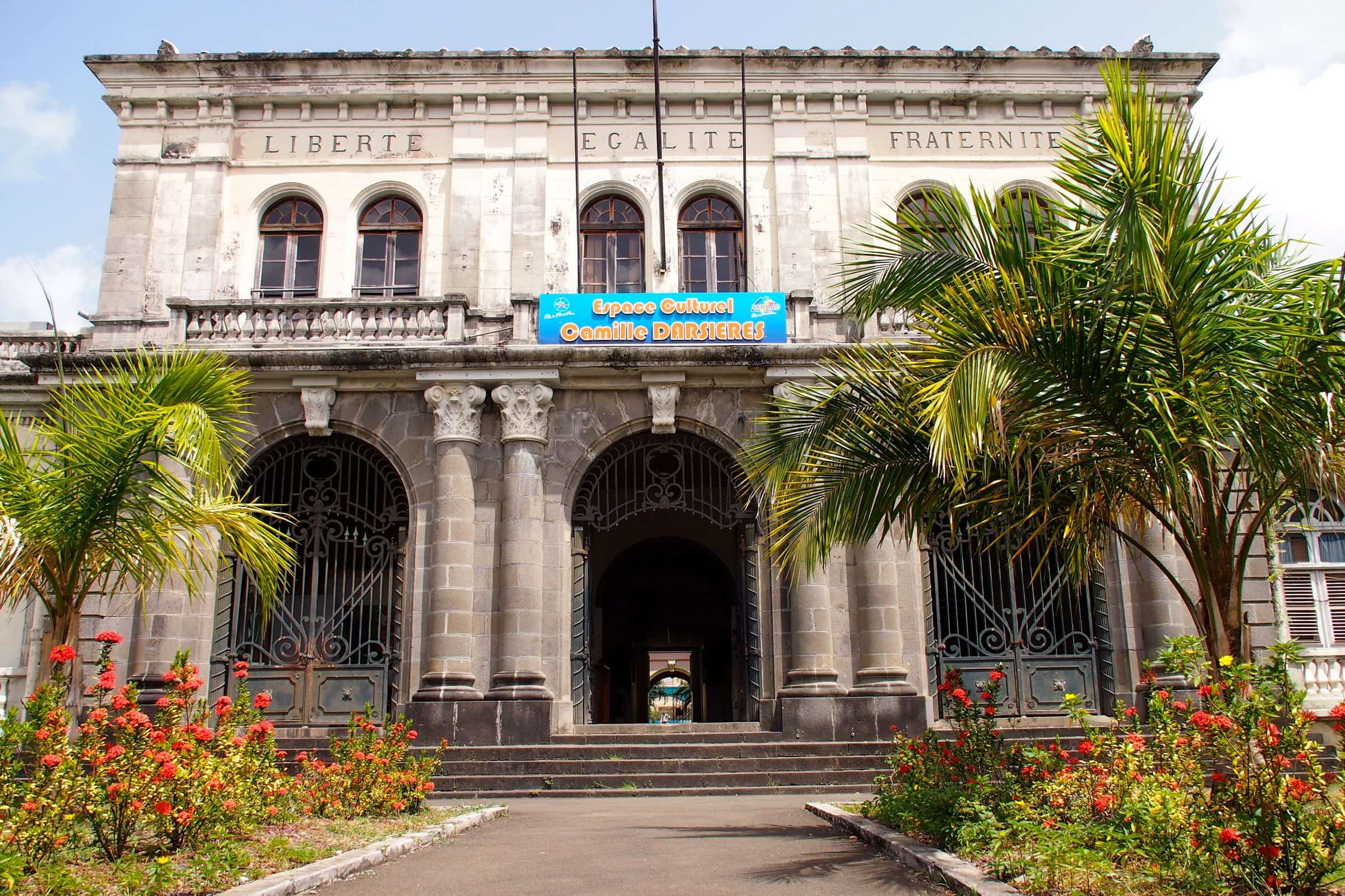Empress Josephine Statue Martinique: Uncommon Attraction
A mystery unsolved now for 25+ years complete with blood, malice, and the severed head of a controversial queen. This is the story of the Empress Josephine statue Martinique.
Caribbean Empress
Remember Marie-Joseph Rose Tasher de la Pagerie? She’s the borderline aristocrat born and raised in Martinique. The one who rose from relative obscurity to rule the French Empire in the early 1800’s alongside her husband, Napoleon? (If you don’t remember, read this.)
Empress Josephine was generally popular among her subjects. Kind and generous are two words commonly used to describe her. No doubt she earned sympathy points for the way Napoleon dumped her after 14 years of marriage in favor of a younger princess.
Why, then, is this statue of the celebrated Empress stained with red paint symbolizing blood and missing its head?
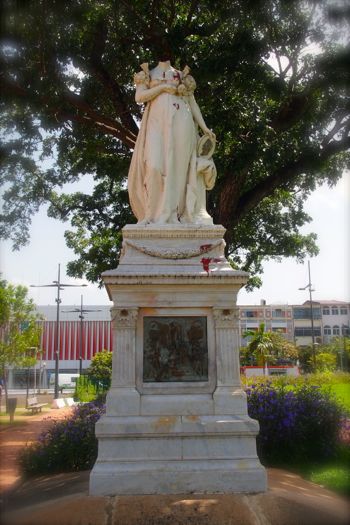
Well, it’s complicated…
Let’s start with location. The statue sits in the sprawling La Savane Park in downtown Fort-de-France. That’s just across the Bay of Fort-de-France from Trois-Ilets, where Josephine lived as a girl.
In other words, Josephine’s home turf.
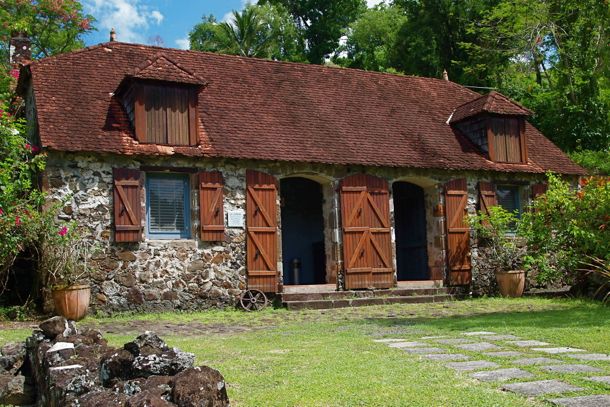
You might think the love for her would be strongest on home soil, right? After all, Josephine did bring much fame and attention to her home island during her life. Even now, she remains one of the most famous people from Martinique, if not the entire Caribbean.
Ask around on your next visit to Martinique and you’re sure to get wildly varying opinions about the home grown Empress. Many harbor a strong sense of pride over the lofty station in life to which Josephine rose.
At the same time, though, there’s one particularly infamous royal decree… One that makes Josephine a villain to most Martinicans.
Napoleon Reinstates Slavery
France had originally abolished slavery in 1789. Soon after Napoleon and Josephine assumed their thrones in 1804, though, it was re-established. Many say it was Josephine that pushed for the change. The reason: to benefit her family’s failing plantation interests back in Martinique.
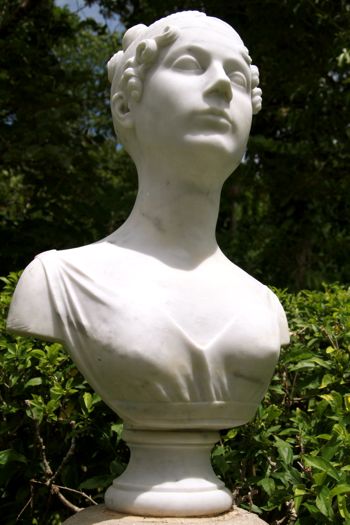
Imagine being a former slave living as a free man or woman in Martinique for more than 10 years, then being forced back into bondage at the alleged behest of your home island’s most famous citizen. The old adage “time heals all wounds” may apply in most cases. For many in Martinique, though, it sure doesn’t when it comes to Empress Josephine.
Decapitated Empress Josephine Statue Martinique
Complexities surrounding the love-hate feelings for Josephine are on full display at her statue. The decapitation echoes the guillotine so commonly used during the Reign of Terror to execute all enemies of the French Revolution. Notably, many of them were aristocrats like Josephine.
The red paint, of course, symbolizes Josephine’s blood.
On the pedestal, vandals wrote: “Respe ba Matinik. Respe ba 22 Me.” Translated from Creole, it means “Respect Martinique. Respect May 22.” The reference is to May 22, 1848, the date of the slave rebellion that eventually led to the final abolition of slavery in the French Colonies.
That’s all the hate, but how about the love? The statue was originally installed in La Savane way back in 1859, just 45 years after Josephine died. It’s stood there in Fort-de-France honoring the Empress for more than 150 years!
Even now, decades since the head has gone missing, there’s no talk of removing or repairing the statue. Nor is anyone calling for a clean up of the “blood.” No one has ever come forward with information on the missing head either. The whole episode just sits there, suspended in time. A symbol of the deep and enduring scars of the island’s colonial past.
Defaced as it is, the statue still speaks to the indelible mark Martinique’s most famous daughter left on the island and the world, both in good ways and bad.
